pigeons

 During World War II, transferring intel from the spies in France…the resistance, was difficult. To fly a plane through the anti-aircraft fire was dangerous, and often not successful. To send a spy on foot was not only something that would take far too long, not to mention the possibility of being caught. The intelligence community had to come up with a way to get the information to the generals and to the president quickly…and it had to be a way to succeed without massive loss of life.
During World War II, transferring intel from the spies in France…the resistance, was difficult. To fly a plane through the anti-aircraft fire was dangerous, and often not successful. To send a spy on foot was not only something that would take far too long, not to mention the possibility of being caught. The intelligence community had to come up with a way to get the information to the generals and to the president quickly…and it had to be a way to succeed without massive loss of life.
After much discussion, they happened on the idea of using homing pigeons to take messages back and forth between the spies, the resistance, and even the citizens of France. The idea was to drop the pigeons in a cage that was parachuted into the country. Once the pigeons were on the ground, the people were to write notes on small pieces of paper, place it in the canister attached to the pigeon’s leg, and release the bird to fly home. These pigeons were a huge help to the war effort, and were used in at least two wars.
Years later, a couple stumbled onto a capsule containing a cryptic note dated to either 1910 or 1916. Jade Halaoui was hiking in the fields near Alsace, France this September 2020. Ahead of him, he noticed something shiny. Upon further inspection, he found a small capsule partially buried in the ground and opened it. Inside was a note, written in German in cursive script by a Prussian military officer. Most likely the canister has been attached to a carrier pigeon, but never reached its destination. Halaoui and his partner, Juliette, took the artifact to the Linge Memorial Museum in Orbey.
A curator took a look at the canister and it’s note. He sat down at a table and delicately lifted the frail-looking slip of paper with tweezers. The note was very old, thin, and worn. It was written in spidery German cursive script. It was determined that the message was likely sent by a Prussian infantry officer via carrier pigeon around the onset of World War I. Dominique Jardy, curator at the Linge museum, told one reporter that the note was written in looping handwriting that is difficult to decipher, however, while the date clearly reads July 16…the year could be interpreted as 1910 or 1916. World War I took place between 1914 and 1918. With that in mind, it was concluded that the note was likely written 1916.
Jardy enlisted a German friend to help him translate the note. The note read in part: “Platoon Potthof receives fire as they reach the western border of the parade ground, platoon Potthof takes up fire and retreats after a while. In Fechtwald half a platoon was disabled. Platoon Potthof retreats with heavy losses.” The message, which was addressed to a senior officer. It appears that the infantryman was based in Ingersheim. The note refers to a military training ground, which lead Jardy to think that the note likely refers to a practice maneuver, not actual warfare. If this was the case, and the note was written in 1910, it could refer to a preparation for war. If it was written in 1916, this could have been training in anticipation of a long time of war.
Jardy mentioned that military officials typically sent multiple pigeons with the same message to ensure that crucial information reached its destination. One can only hope that is true, because if this was vital information, 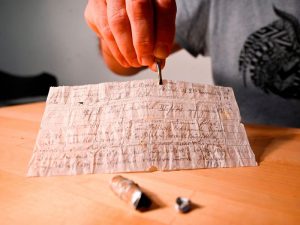
 and it did not get through, finding it now is unfortunately more than a century too late. Halaoui discovered the long-lost message just a few hundred yards from its site of origin, so Jardy suspects that this capsule slipped off the homing pigeon’s leg early in its journey. I hope that is true, because some of these pigeons were shot down. Others were caught by the hungry citizens and used for food, but some made it home and they were heroes of war too, because they brought important intel to the Allies.
and it did not get through, finding it now is unfortunately more than a century too late. Halaoui discovered the long-lost message just a few hundred yards from its site of origin, so Jardy suspects that this capsule slipped off the homing pigeon’s leg early in its journey. I hope that is true, because some of these pigeons were shot down. Others were caught by the hungry citizens and used for food, but some made it home and they were heroes of war too, because they brought important intel to the Allies.
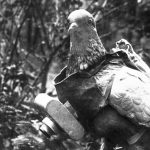 When we think of war, we think mostly of battle, but we should also think of the spies that gather intel. Most often, spies are men and women who have been carefully trained to avoid the enemy, and very possibly to live among the enemy without being detected, so they can hear the plans of the enemy and pass the information to the intelligence community, so it can be used against the enemy so as to win the war. There is, however, another kind of spy that has long been used in war, and was used especially during World War I and World War II…the pigeon. Now this is a spy I would have never have imagined.
When we think of war, we think mostly of battle, but we should also think of the spies that gather intel. Most often, spies are men and women who have been carefully trained to avoid the enemy, and very possibly to live among the enemy without being detected, so they can hear the plans of the enemy and pass the information to the intelligence community, so it can be used against the enemy so as to win the war. There is, however, another kind of spy that has long been used in war, and was used especially during World War I and World War II…the pigeon. Now this is a spy I would have never have imagined.
The reason pigeons caught the attention of the military was that they were trained to fly home…from wherever they were dropped off. I have no idea how they can do that, but they can and do. The spy pigeons went in as Operation Columba, during some of the bloodiest years of World War II. The idea was to drop cages attached to parachutes into the occupied areas of France, with the hope that the people and resistance members, as well as soldiers could attach messages with critical intel on the enemy locations to the pigeons, who would then be sent back to their home base. There, soldiers would be 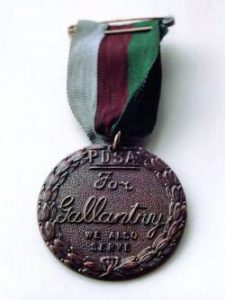 waiting to get the messages to the intelligence community. The plan was perfect, but very risky for the pigeons. So many dangers awaited them…the guns of the enemy, not being found and dying in the cage, and one most of us wouldn’t think of…hungry people. The operation, on its face, was deceptively simple. The British planes dropped 16,000 homing pigeons over occupied Europe during the course of the war, parachuted in small baskets with rice paper, containing a list of questions to be answered by civilians who found them, tucked into canisters tied to their legs. Then the pigeons were to be sent home. Many were lost to the perils in their way, but there were a good number who made it back. A some were decorated with the Dickin Medal for their service…32 pigeons in all were awarded the medal. Pigeon Soldiers like “Winkie” (1943), “Commando” (1944), “Paddy” (1944), “William of Orange” (1944), Mary of Exeter (1945), “G.I. Joe” (1946), Gustav (1944), and Beach Comber (1944), just to name a few. The homing pigeons were donated by their owners…no small sacrifice when you consider that so many lost their lives during the operation. Still, like their human counterparts, the pigeons did their duty, and made their owners proud.
waiting to get the messages to the intelligence community. The plan was perfect, but very risky for the pigeons. So many dangers awaited them…the guns of the enemy, not being found and dying in the cage, and one most of us wouldn’t think of…hungry people. The operation, on its face, was deceptively simple. The British planes dropped 16,000 homing pigeons over occupied Europe during the course of the war, parachuted in small baskets with rice paper, containing a list of questions to be answered by civilians who found them, tucked into canisters tied to their legs. Then the pigeons were to be sent home. Many were lost to the perils in their way, but there were a good number who made it back. A some were decorated with the Dickin Medal for their service…32 pigeons in all were awarded the medal. Pigeon Soldiers like “Winkie” (1943), “Commando” (1944), “Paddy” (1944), “William of Orange” (1944), Mary of Exeter (1945), “G.I. Joe” (1946), Gustav (1944), and Beach Comber (1944), just to name a few. The homing pigeons were donated by their owners…no small sacrifice when you consider that so many lost their lives during the operation. Still, like their human counterparts, the pigeons did their duty, and made their owners proud.
The pigeons did other work, besides just delivering messages. The military equipped some with tiny cameras and they pigeons took reconnaissance photos as they flew back to their home base. The military didn’t have drones in those days, and planes flying “low and slow” would surly be shot down, so the pigeons served as  drones in their day too. Most of us think of homing pigeons as being a hobby, and I suppose it started out as that for most of the handlers, but then they grew to love their pigeons…just like family. Each loss was felt deeply, and each successful return met with great relief. They were proud of their very special soldiers, and we as a nation should be too. It gives me a whole new view of pigeons, which I have always enjoyed watching whenever I am in downtown Casper, where we have a beautiful flock of them that grace the skies above town…dipping and soaring high above the buildings, as if in play, but we should remember that at any time, they could be called upon to serve in a different capacity, if the need arose.
drones in their day too. Most of us think of homing pigeons as being a hobby, and I suppose it started out as that for most of the handlers, but then they grew to love their pigeons…just like family. Each loss was felt deeply, and each successful return met with great relief. They were proud of their very special soldiers, and we as a nation should be too. It gives me a whole new view of pigeons, which I have always enjoyed watching whenever I am in downtown Casper, where we have a beautiful flock of them that grace the skies above town…dipping and soaring high above the buildings, as if in play, but we should remember that at any time, they could be called upon to serve in a different capacity, if the need arose.
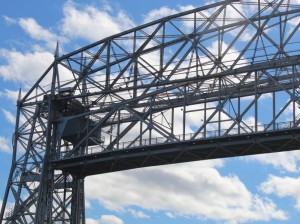 One simply can’t go to Lake Superior and not go to Canal Park. There is nothing quite like watching a ship go through the canal and under the lift bridge. There is such an atmosphere of celebration, with kids playing and the birds flying everywhere. Crowds wait patiently for the arrival or departure of the next ship. Anticipation fills the air. It’s like being a kid at the movies for the first time. You almost can’t believe you are really there.
One simply can’t go to Lake Superior and not go to Canal Park. There is nothing quite like watching a ship go through the canal and under the lift bridge. There is such an atmosphere of celebration, with kids playing and the birds flying everywhere. Crowds wait patiently for the arrival or departure of the next ship. Anticipation fills the air. It’s like being a kid at the movies for the first time. You almost can’t believe you are really there.
As we waited for the next ship to go through the canal, I watched the people sitting around, trying to keep cool in the afternoon sun, while the little children tried in vain to catch the seagulls and pigeons that were flying around. The seagulls seemed to think it was a game of sorts, or maybe they were just hoping they would have some food for them. And lots of people did. It’s fun to feed the birds, even if the bread they were getting probably isn’t the best food for them. The seagulls would swoop over the people, and then almost hover in place, floating on the breeze, then they 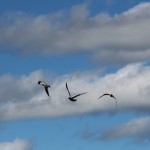
 would glide down to fly over the water in the canal, before going back to see if anyone had food again. It was such a pleasant flight to watch.
would glide down to fly over the water in the canal, before going back to see if anyone had food again. It was such a pleasant flight to watch.
Finally the moment came, and it was announced that a ship was coming in. The bridge started up and as many people as were able moved down to the side wall of the canal to get a closer look. The first ship to go under the bridge was a lake cruise ship. It was interesting, but it was not the spectacular sight I imagined. I just hoped that there would be a big oar boat coming through too. It looked as if I was about to be disappointed, then the announcer said that the Eeborg was about five minutes out. I didn’t see how he could possible make it into the canal within the allotted thirty minute window they had to keep the bridge up. Traffic was backed up from the island on the other side, waiting to come across. Nevertheless, the Eeborg moved much faster than I could have ever expected…especially for such a large ship.
Soon, there it was looming so tall in the canal. It wasn’t a luxury liner, and yet every person  there felt the same sense of awe at this amazing ship moving gracefully through the canal, under the bridge, and into the harbor to receive it’s load, before turning around and departing the next day, or later that night. It didn’t even matter if they had seen it a thousand times before, this scene still held them in captivating awe. Some of the ships that come here go all over the world…and their journey starts right there at Lake Superior. The horn sounded, and the Eeborg passed beneath the bridge and eventually out of our line of sight. I felt like I had seen a bit of a far reaching commerce, and it was very exciting.
there felt the same sense of awe at this amazing ship moving gracefully through the canal, under the bridge, and into the harbor to receive it’s load, before turning around and departing the next day, or later that night. It didn’t even matter if they had seen it a thousand times before, this scene still held them in captivating awe. Some of the ships that come here go all over the world…and their journey starts right there at Lake Superior. The horn sounded, and the Eeborg passed beneath the bridge and eventually out of our line of sight. I felt like I had seen a bit of a far reaching commerce, and it was very exciting.
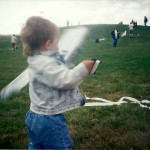 I’m not a wind lover. In fact, most of the time the wind annoys me, but there are things that actually require the wind to accomplish their goal. I remember as a kid, trying to fly a kite a few times. I was never very good at it, which is probably why I didn’t do it very much. Nevertheless, I love watching someone, who knows how, fly a kite. There is just something about watching that kite floating effortlessly on air…provided I don’t necessarily have to be sitting outside in the wind when all that is going on. Watching from my car or my window works just fine for me. One of my favorite times to watch kite flying is when it is a little kid trying to do it. Their little legs just don’t go fast enough to get the kite in the air, but the have a really great time trying…at least for a while. Then they get frustrated, just like everyone else, and if you don’t help them get that kite in the air, they are pretty much over
I’m not a wind lover. In fact, most of the time the wind annoys me, but there are things that actually require the wind to accomplish their goal. I remember as a kid, trying to fly a kite a few times. I was never very good at it, which is probably why I didn’t do it very much. Nevertheless, I love watching someone, who knows how, fly a kite. There is just something about watching that kite floating effortlessly on air…provided I don’t necessarily have to be sitting outside in the wind when all that is going on. Watching from my car or my window works just fine for me. One of my favorite times to watch kite flying is when it is a little kid trying to do it. Their little legs just don’t go fast enough to get the kite in the air, but the have a really great time trying…at least for a while. Then they get frustrated, just like everyone else, and if you don’t help them get that kite in the air, they are pretty much over 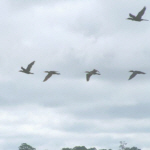 the whole thing.
the whole thing.
I love watching the birds on a windy day. What we consider an annoyance, they look at as the perfect way to play. They spread their wings and head into the wind. The wind holds them in place, without even having to try to fly. And they can stay there like that for quite a while. It seems so effortless, and yet, it might be a lot of work for them for all we know. Nevertheless, to see a bird in hover mode is as cool as watching them soar into the wind in playful flight. Here in Casper, we have some pigeons that fly around in the downtown area. I know that the downtown merchants don’t really like them much, because of the mess they leave, but if you sit down for just a few minutes and watch them dip and soar, always in a group, always of one accord, always beautiful, you will find yourself having a hard time faulting them for the mess…or at least that’s how I feel.

For me personally, a windy day is such an annoyance. It messes up my hair, and believe me, there is not enough hair spray on the planet, instant freeze or otherwise, to make your hair stay in place on a windy day. Still, the kid me remembers wearing a jacket out on a windy day, and lifting it above my head to make a sail, and letting the wind pull me out into it a little. It makes me feel just a little bit like a bird or maybe a kite, and reminds me that even the wind has its good points, few as they may be. Maybe I should give that whole jacket sailing thing a try again sometime…I mean, maybe floating on air would lend a little bit of freedom to an otherwise responsibility filled life.

